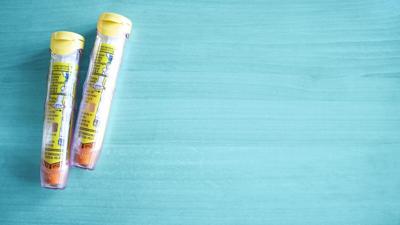
Allergies are abnormal immune system responses to stimuli, such as peanuts, that would normally be harmless. While for most people a peanut is a delicious snack, for people with peanut allergies consuming, touching, or even just smelling a peanut may be enough for the immune system to trigger a series of reactions that cause several uncomfortable symptoms. In certain cases, these reactions can even be life-threatening.
For parents with children, the risk to their child’s health and well-being presented by allergies can be terrifying. While it’s crucial to always consult qualified healthcare professionals who have completed an online FNP program nursing qualification or related degree, there are a few things you can do yourself. Therefore today, we’re going through five tips that will help parents handle childhood allergies.
Understand What Type of Allergy Your Child Has
The severity of allergies can vary from person to person, and the same is true of children. If you suspect your child is allergic to something, it’s important to get them to a GP as soon as possible, especially if there is a genetic history of allergies in either parent.
Once you understand what type of allergies your child has, and to what severity, you will better be able to prepare for the eventuality that your child is exposed to the allergen that triggers their reaction. Understanding the type of allergies that your child has will allow you to adjust your life to better manage their condition.
Anaphylaxis or Allergy?
Although anaphylaxis is a type of allergic reaction, it is generally set apart from “normal” allergies due to its severity. All anaphylactics are allergic, but not everyone with allergies has anaphylaxis. Anaphylaxis causes the body to go into shock, causing a sudden drop in blood pressure, a narrowing of the airways, a quick pulse, skin rash, and more.
Anaphylaxis can be deadly if not treated immediately. Doing so requires a dose of a drug called “epinephrine,” which is usually carried by anaphylactics in the form of a portable autoinjector called an “EpiPen.” Knowing whether or not your child’s allergies are standard allergies or anaphylaxis is crucial, not just to their treatment, but to their life.
Preventative Measures
Although most allergies aren’t life-threatening, if you want to give your kid the best chance possible of having no allergies, then there are a few things you can do.
Although we acknowledge that this is not an option for all parents for a variety of reasons, there is some small evidence that breastfeeding your infant for the first 4-6 months can reduce the likelihood of an allergy developing. This is likely due to the immune-system strengthening properties of breastmilk. There are also dietary habits during pregnancy that can decrease the likelihood of an allergy occurring in your child. For food-based allergens, can typically be detected around the 4-6 month mark when single-ingredient soft foods, allowing parents to monitor the infant’s intake and reactions.
Introducing Allergens
Some potential allergens give parents the chance to enrich a child’s life (and the family’s) through engaging in their prevention. For example, getting a household pet while your child is in infancy has been directly linked to a lack of allergies to animals later on in life.
It can feel counter-intuitive, but letting your kids get a little dirty and messy during playtime is very important to your child’s development. Kids should always be allowed to play, but there is a certain importance in getting your child out in the garden, digging in the dirt for colorful rocks, making mud pies, playing in the sand, and more. Introducing dirt this way exposes your child to the germs that occur in nature, which then build your child’s immune system against those bacteria.
Obviously don’t let your infant consume fistfuls of soil and mud (and we know they’re going to try to), but some well-monitored muddy fun benefits everyone, and provides a great opportunity for some family bonding and fun.
Don’t Over Sterilize
Keeping clean is a good habit, but let’s be realistic - no one lives in a sterile environment. There is no such thing as a house that is 100% free of potentially harmful bacteria, no such thing as a room without some measure of dust in it. So not only does keeping your child in an overly clean environment provide you with infinitely more work than you need, set an impossible standard, and lay extra stress at your feet, but it harms your child too.
Growing up in an environment with intense cleanliness standards is detrimental to a child’s immune development. The absence of a “normal” amount of bacteria and environmental detritus means that your child is being deprived of exposure to these elements, and therefore will more easily get sick because of them later in life. Keep your house clean by all means, and keep your child away from obviously harmful messes, but don’t fear the daily clutter. Just don’t let it reach a fever pitch.




(0) comments
We welcome your comments
Log In
Post a comment as Guest
Keep it Clean. Please avoid obscene, vulgar, lewd, racist or sexually-oriented language.
PLEASE TURN OFF YOUR CAPS LOCK.
Don't Threaten. Threats of harming another person will not be tolerated.
Be Truthful. Don't knowingly lie about anyone or anything.
Be Nice. No racism, sexism or any sort of -ism that is degrading to another person.
Be Proactive. Use the 'Report' link on each comment to let us know of abusive posts.
Share with Us. We'd love to hear eyewitness accounts, the history behind an article.